Your cart is currently empty!
What Is An Artistic Style?
An artistic style refers to the distinctive manner in which an artist creates their work. It encompasses the visual elements of the art, such as the use of color, line, form, and composition, as well as the broader aesthetic principles that the artist follows.
An artistic style can be influenced by a wide range of factors, including the artist’s personal preferences, cultural background, and the historical period in which they work.
Many different artistic styles have emerged throughout history, and each style has its own unique characteristics and features. Some examples of artistic styles include realism, impressionism, expressionism, surrealism, abstraction, pop art, cubism, fauvism, abstract expressionism, and conceptual art. These styles are distinguished by how they approach art creation, and each has unique aesthetic qualities and principles.
An artist’s style can evolve and change over time as they develop and experiment with different techniques and approaches to art-making. Some artists may have a distinctive and recognizable style, while others may be known for their ability to adapt and incorporate elements from multiple types into their work. Ultimately, an artistic style is a reflection of the artist’s individual vision and approach to creating art.
What Are The Most Popular Artistic Styles?
Many different artistic styles have been prevalent throughout history. It can be difficult to determine the top ten most popular styles, as art is a very subjective matter, and what is popular can vary depending on the time and place. However, some artistic styles that are widely considered to be among the most popular include:
Realism
Realism is a style that focuses on creating highly detailed and accurate representations of the real world.
Impressionism
Impressionism is a style that emphasizes light and color to capture the fleeting effects of light and atmosphere.
Expressionism
Abstract Expressionism is a style that seeks to express the artist’s emotional and psychological state through the use of exaggerated colors, lines, and forms.
Surrealism
Surrealism is a style that seeks to express the unconscious mind through dreamlike imagery and strange, irrational elements.
Abstraction
Abstraction is a style that focuses on using geometric shapes, colors, and lines to create non-representational art.
Pop Art
Pop Art is a style that incorporates elements of popular culture, such as advertising and commercial imagery, into the art.
Cubism
Cubism is a style that breaks down objects into geometric shapes and rearranges them into abstract compositions.
Fauvism
Fauvism is a style that emphasizes using bright, bold colors to create a sense of emotion and expressiveness.
Abstract Expressionism
Abstract Expressionism is a style that emphasizes using gestural brushwork and vibrant colors to express the artist’s inner emotions and thoughts.
Conceptual Art
Conceptual Art is a style that focuses on the idea or concept behind the art rather than the physical form of the art itself.
These are just a few examples of the many popular artistic styles that have emerged throughout history. Countless other styles and movements have been influential and widely appreciated, and what is considered popular can vary depending on the context and perspective.
How Can I Choose An Artistic Style?
Choosing an artistic style can be a challenging and complex process. There are many different styles to choose from, and each style has its own unique characteristics and aesthetic principles. Here are some tips for how to choose an artistic style that is right for you:
- Consider your personal preferences: Think about what you enjoy creating and what styles of art appeal to you. Do you like to make detailed, realistic depictions of the world around you? Or do you prefer to use bold, abstract forms and colors? Pay attention to what styles of art you are naturally drawn to, and consider these preferences when choosing an artistic style.
- Explore different styles: Don’t be afraid to experiment with different styles and see what works for you. Try out a variety of styles, and see how they feel and what they allow you to create. Experimentation can help you to develop your own unique style and approach to art-making.
- Consider your goals: Think about what you want to achieve with your art. Are you looking to create art that is highly detailed and realistic? Or are you interested in creating art that is more expressive and abstract? Your goals can help you choose a style that is right for you and will allow you to achieve the results you want.
- Take inspiration from other artists: Look at the work of other artists, and see what styles and techniques they are using. Consider what you like and don’t like about their work, and see if you can incorporate some of these ideas into your own art. Don’t be afraid to be inspired by the work of others, and use it as a starting point for your own artistic journey.
- Follow your instincts: Ultimately, the most important thing is to follow your instincts and create art that feels right to you. Be bold, try out different styles, and be encouraged if something doesn’t work out. Keep experimenting, and trust your own artistic vision.
By considering your personal preferences, exploring different styles, setting goals, taking inspiration from other artists, and following your instincts, you can choose an artistic style that is right for you and that will allow you to create art that is truly your own.
How Can You Tell What Artistic Style Is Used?
There are several ways to tell what an artistic style is. Some key characteristics to look for include the use of specific visual elements, such as color, line, form, and composition, as well as the aesthetic principles the artist follows. Here are some tips for how to identify an artistic style:
Look at the visual elements of the art
Pay attention to how the artist uses color, line, form, and composition to create the artwork. Different artistic styles will have different approaches to these elements, which can be a key indicator of the artist’s style. For example, realism typically uses detailed, lifelike depictions of the world, while abstract expressionism often uses bold, gestural brushwork and vibrant colors.
Consider the subject matter
The subject matter of the art can also be a clue to the artist’s style. Different styles will often have different approaches to depicting specific subjects, which can be a useful way to identify the style. For example, surrealism often uses dreamlike, irrational imagery, while pop art often incorporates elements of popular culture, such as advertising and commercial imagery.
Research the artist and the historical period
Knowing more about the artist and the historical period in which they were working can also help you identify their style. Many artistic styles are associated with specific artists and movements, and understanding the context of the artwork can give you important clues about the style. For example, if the artist was working in the early 20th century, you may be able to identify their style as cubism or fauvism.
Compare the artwork to other examples
Another way to identify an artistic style is to compare the artwork to other examples of the same style. Look at how the artist uses the visual elements and subject matter in relation to other artists known for using the same style. This can help you see the style’s key characteristics and how the artist uses them in their work.
Overall, identifying an artistic style can be complex and require research and comparison to other examples. You can better understand the artist’s style by paying attention to the visual elements, subject matter, historical context, and comparison to other instances.
Check out some of our products
-
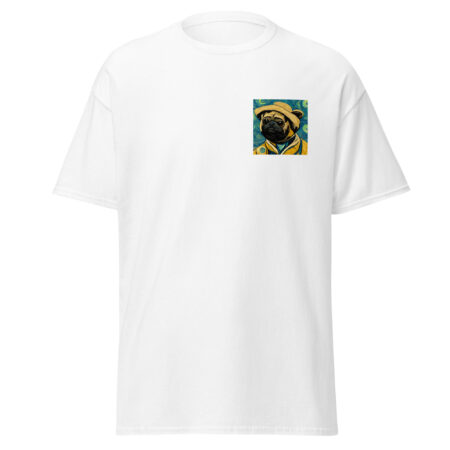 Vincent Van Gogh Style Pug T-Shirt£25.00
Vincent Van Gogh Style Pug T-Shirt£25.00 -
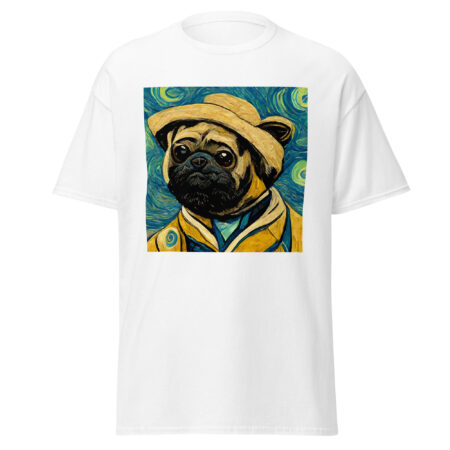 Vincent Van Gogh Style Pug T-Shirt£25.00
Vincent Van Gogh Style Pug T-Shirt£25.00 -
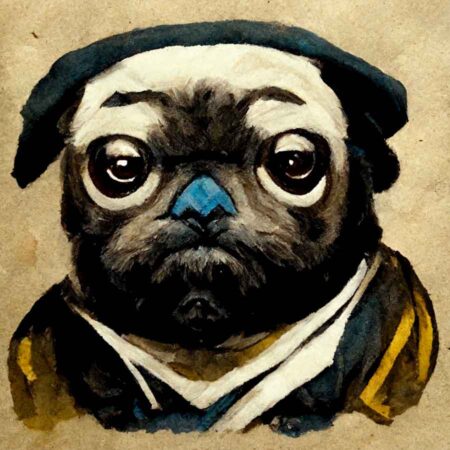 Rembrant Style Pug Poster£30.00
Rembrant Style Pug Poster£30.00 -
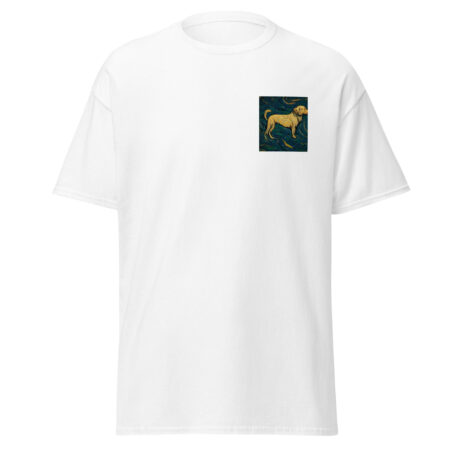 Vincent Van Gogh Style Labrador T-Shirt£25.00
Vincent Van Gogh Style Labrador T-Shirt£25.00 -
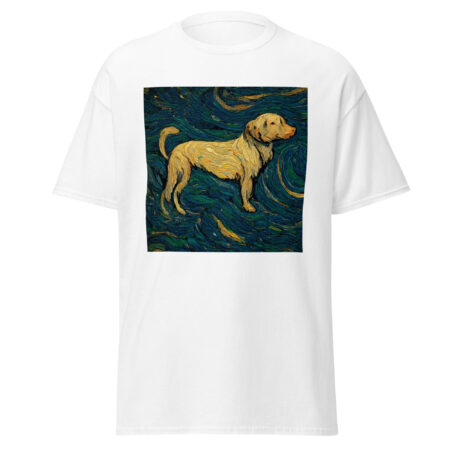 Vincent Van Gogh Style Labrador T-Shirt£25.00
Vincent Van Gogh Style Labrador T-Shirt£25.00 -
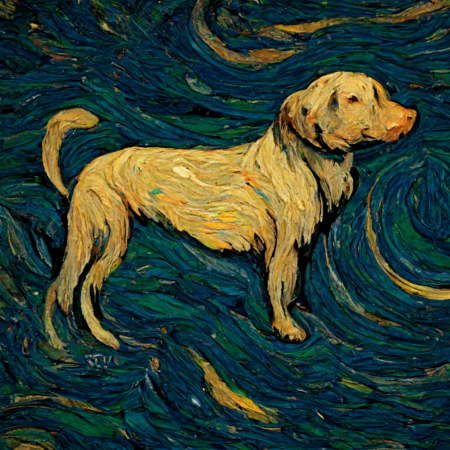 Vincent Van Gogh Style Labrador Poster£30.00
Vincent Van Gogh Style Labrador Poster£30.00 -
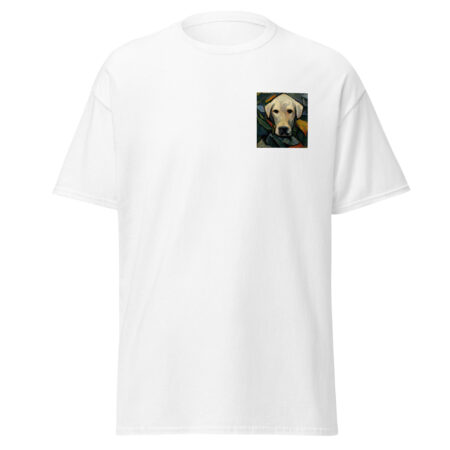 Paul Cezanne Style Labrador T-Shirt£25.00
Paul Cezanne Style Labrador T-Shirt£25.00 -
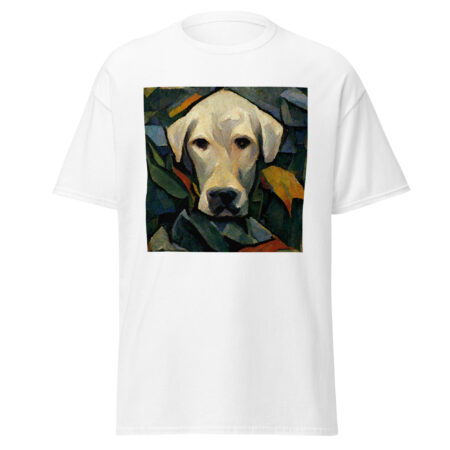 Paul Cezanne Style Labrador T-Shirt£25.00
Paul Cezanne Style Labrador T-Shirt£25.00 -
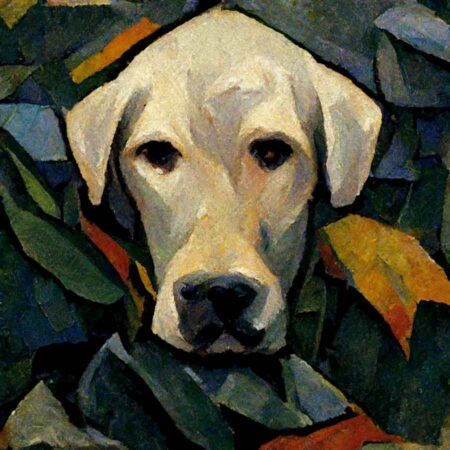 Paul Cezanne Style Labrador Poster£30.00
Paul Cezanne Style Labrador Poster£30.00
by
Tags: